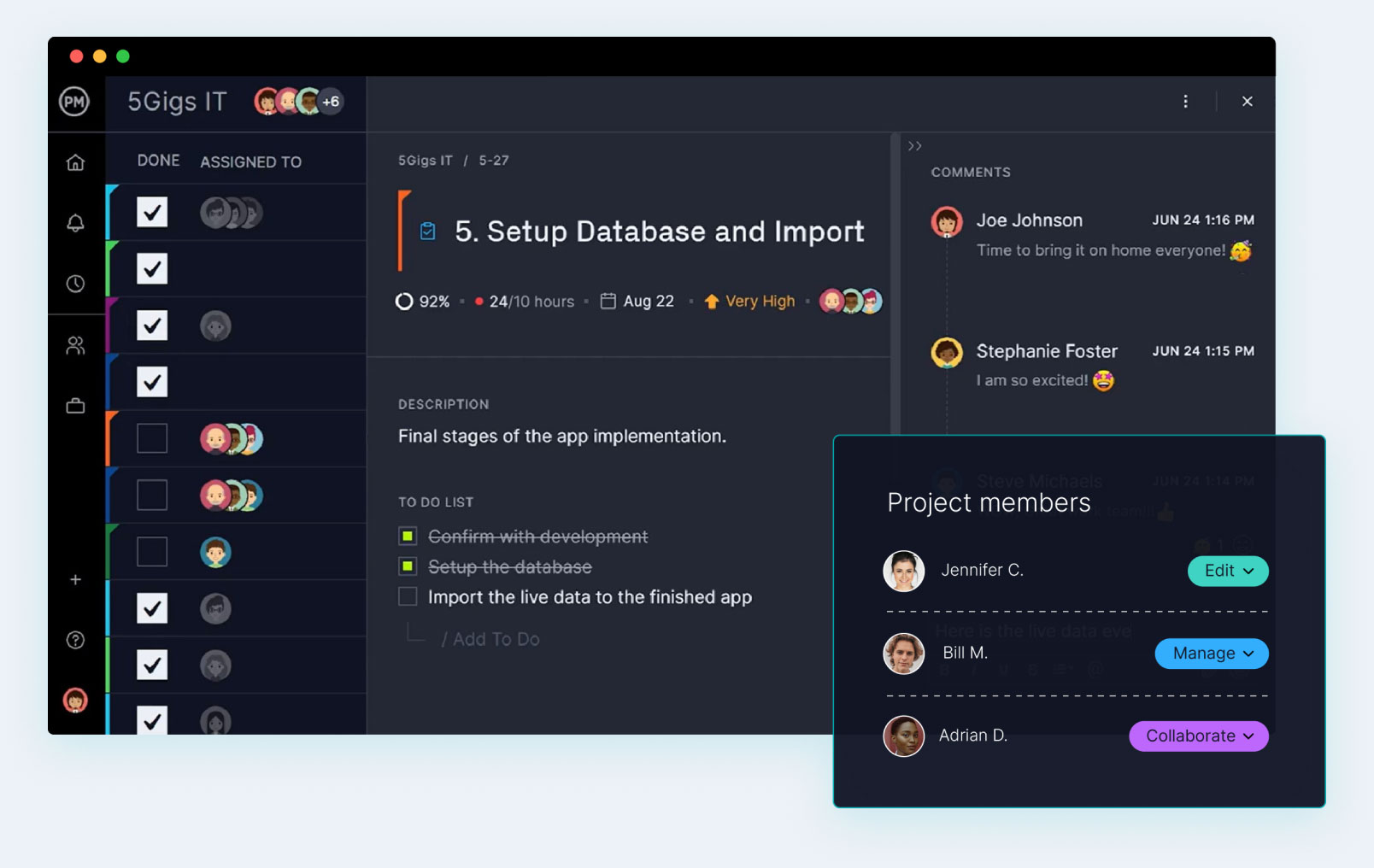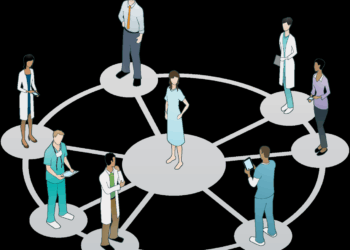Project Management Software: Essential New Features
The modern workplace is a dynamic and complex environment. With the rise of remote and hybrid teams, the increasing demand for agile methodologies, and the need to manage projects with ever-growing complexity, a simple spreadsheet or shared document is no longer sufficient. Organizations of all sizes are recognizing that effective project management is not just a best practice—it’s a critical differentiator and a core pillar of success. This shift has propelled project management (PM) software from a basic task tracker to a sophisticated, all-in-one operational hub. The latest generation of these tools goes far beyond simple checklists, unveiling a suite of essential new features that are fundamentally changing how teams collaborate, execute, and deliver.
These next-gen platforms are no longer just repositories for tasks and deadlines. They are intelligent, interconnected ecosystems designed to provide complete visibility, automate tedious processes, and empower teams to achieve new levels of productivity. This comprehensive guide will explore the foundational components of modern PM software, dive deep into the game-changing new features, and discuss the strategic benefits of adopting these revolutionary tools.
The Foundation: Core Components of Modern PM Software
Before we explore the cutting-edge features, it is important to understand the core functionalities that have defined project management software for years. These are the basic building blocks that form the foundation of any effective tool.
A. Task and Subtask Management
At its simplest, PM software must be able to break down a large project into manageable tasks and subtasks. This feature includes the ability to assign tasks to specific team members, set deadlines, and add descriptions, attachments, and priorities. It provides a clear, hierarchical structure to a project, ensuring everyone understands their role and responsibilities.
B. Collaboration and Communication Tools
Effective collaboration is the lifeblood of any project. Modern PM software provides a centralized space for communication, eliminating the need for scattered email threads or external chat apps. Features like in-app commenting on specific tasks, @-mentions to tag teammates, and real-time activity feeds ensure that all communication is directly tied to the work being done, providing a complete historical record and context for every decision.
C. Multiple Project Views
Different projects and team members require different ways to visualize work. A good PM tool offers multiple views to suit various methodologies.
- Kanban Boards: Ideal for agile and highly visual workflows, these boards use columns to represent different stages of a project (e.g., To Do, In Progress, Done). Tasks are represented by cards that are moved from one column to the next as they progress.
- Gantt Charts: For complex projects with many dependencies, Gantt charts provide a chronological timeline view. They show tasks, their start and end dates, and how tasks are linked to one another, making it easy to identify potential bottlenecks and manage critical paths.
- Calendar Views: Perfect for marketing campaigns, content calendars, or event planning, this view displays tasks on a calendar, providing a clear overview of upcoming deadlines and milestones.
D. Basic Reporting and Analytics
Even foundational software includes some level of reporting to track progress. This typically involves dashboards that show a high-level overview of project status, completed tasks, and team member workload. This feature provides a quick snapshot of project health without a deep dive into the data.
The Next Frontier: Unveiling Essential New Features
While the core features are essential, the latest innovations in project management software are what truly set them apart. These new functionalities go beyond simple tracking, offering intelligent, automated, and interconnected solutions that are reshaping project execution.
A. Advanced Workflow and Task Automation
The single greatest time-saver in modern PM software is automation. These new features allow users to create sophisticated, multi-step workflows without any coding. They work on an “if this, then that” logic, automating a series of actions based on a specific trigger.
- Trigger-Based Actions: For example, a rule can be set up so that when a task is moved to the “Review” column, the project manager is automatically notified via email and a new subtask to “Provide Feedback” is assigned to them. This eliminates manual checks and ensures the project moves forward seamlessly.
- Recurring Workflows: This feature is invaluable for routine tasks. Teams can create automated workflows for client onboarding, bug reporting, or weekly progress reports, ensuring every step is followed consistently without a single manual trigger.
- Conditional Logic: More advanced automation includes conditional logic, where different actions are triggered based on a specific condition. For example, if a bug report is marked as “High Priority,” a notification is sent to the development team lead and the task’s deadline is automatically reduced.
B. AI-Powered Insights and Predictive Analytics
Artificial intelligence is no longer just a buzzword in project management; it’s a powerful engine for intelligence. AI-powered features analyze vast amounts of historical project data to provide actionable insights.
- Timeline Prediction: Based on a team’s past performance, AI can predict with a high degree of accuracy whether a project is on track to meet its deadline. If it detects potential delays, it can issue an early warning, giving the manager time to adjust the plan.
- Risk Identification: By analyzing factors like task dependencies, resource allocation, and team workload, AI can proactively identify potential risks that might otherwise go unnoticed. It can flag a task that is likely to become a bottleneck or a team member who is at risk of burnout.
- Resource Recommendations: AI can analyze a team’s skills and availability to recommend the best person for a new task, ensuring that work is allocated efficiently and effectively.
C. Robust Resource Management and Capacity Planning
This feature moves beyond simply showing who is busy. It provides a complete overview of a team’s workload and capacity, empowering managers to make smarter decisions and prevent burnout.
- Workload Visualization: Dashboards can now show a real-time, high-level view of who is over-allocated, under-utilized, or at capacity. This allows managers to re-distribute tasks and prevent key team members from becoming bottlenecks.
- Capacity Planning: This feature helps managers plan for future projects. By seeing how much bandwidth a team has in the coming weeks or months, managers can make informed decisions about when to take on new projects or when to hire more help.
- Skill-Based Allocation: Some advanced tools can even match tasks to team members based on their specific skills and experience, ensuring that the right person is assigned to the right job.
D. Integrated Budget and Financial Management
For a long time, budget tracking was a separate function, often handled in a different software. The latest PM tools are integrating financial features to provide a holistic view of a project’s health.
- Real-Time Budget Monitoring: These tools can track project spending against the allocated budget in real time. If a project is at risk of going over budget, an alert can be sent, allowing for course correction before it’s too late.
- Invoice Generation and Expense Tracking: Some platforms now allow teams to track expenses directly within the project and even generate invoices for clients, streamlining the financial workflow and providing a single source of truth for project finances.
- Cost-to-Complete Analysis: By combining financial data with task progress, these tools can provide an accurate forecast of the total cost required to complete a project, helping with long-term financial planning.
E. Cross-Platform Integrations and API Connectivity
No single tool exists in a vacuum. A modern PM platform must connect seamlessly with an organization’s existing tech stack.
- Seamless Communication: Integrations with popular communication tools like Slack and Microsoft Teams allow users to receive notifications and share project updates directly in their chat channels, reducing context switching.
- Development and Sales Hubs: Integrations with software development platforms like GitHub or sales tools like Salesforce ensure that project tasks are automatically updated based on activity in these other systems, creating a unified workflow.
- Unified Data Flow: Advanced API connectivity allows developers to create custom integrations, pulling and pushing data between the PM tool and a company’s internal systems, creating a single, powerful source of truth for all project-related information.
F. Dynamic Forms and Data Collection
Project managers often need to collect information from clients, stakeholders, or other teams. New features allow them to create custom, dynamic forms right within the software.
- Custom Request Forms: Teams can build custom forms for things like bug reports, feature requests, or content ideas. When a form is submitted, it automatically creates a new task in the project, pre-populated with all the relevant information.
- Conditional Logic in Forms: These forms can use conditional logic to hide or show questions based on previous answers, ensuring that the team only collects the necessary information.
G. Real-time Risk Assessment and Mitigation
Going beyond simple AI predictions, these systems are building in real-time risk assessment models.
- Proactive Risk Scoring: The software can analyze project variables in real time and assign a risk score to different tasks or milestones. A task with many dependencies and a tight deadline would have a higher risk score, alerting the manager to monitor it closely.
- Scenario Modeling: Some advanced tools allow managers to model different scenarios (e.g., what if a key resource is unavailable for a week?) to see the potential impact on the project timeline, helping them build more resilient plans.
The Strategic Benefits of Adopting Next-Gen PM Software
The adoption of these new features is not just a technological upgrade; it’s a strategic move that delivers tangible business benefits.
A. Enhanced Productivity and Efficiency
By automating manual tasks, providing a single source of truth, and giving a clear overview of work, these tools eliminate bottlenecks and allow teams to get more done in less time.
B. Improved Collaboration and Transparency
With all communication and progress centralized, team members can collaborate more effectively. Stakeholders and managers have real-time visibility into project status, reducing the need for lengthy status meetings and ensuring everyone is on the same page.
C. Data-Driven Decision Making
The AI-powered insights and robust analytics provided by these tools allow managers to move away from guesswork and make decisions based on hard data. This leads to more accurate project forecasts and better resource allocation.
D. Greater Adaptability and Agility
The flexibility of modern PM software, with its multiple views and robust automation, makes it the perfect tool for agile teams. It allows for quick pivots and adjustments to a project plan as new information becomes available.
E. Reduced Costs and Optimized Resource Allocation
By preventing burnout and over-allocation, and by providing a clear view of a team’s capacity, these tools help organizations optimize their most valuable resource: their people. This leads to reduced costs and a healthier, more productive workforce.
Navigating the Implementation and Future Outlook
While the benefits are clear, successfully implementing a new PM tool requires careful planning. Companies must consider user training, data migration, and cost. However, the investment is well worth it, as these tools are quickly becoming the standard for successful project delivery.
Looking ahead, the future of project management software is even more exciting. We can expect deeper AI integration, with tools that can automatically generate a project plan from a simple text prompt. The software will likely become even more proactive, using AI to not just identify risks but to suggest solutions. As virtual reality and the metaverse gain traction, we may even see collaborative project spaces where teams can interact with their projects in a shared digital environment. The era of the intelligent project management platform has arrived, and it is reshaping how we work, one project at a time.










